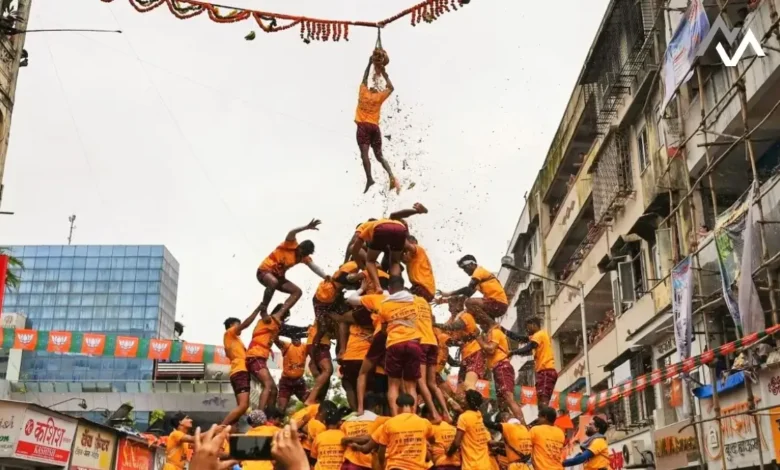Dahi Handi: A Colorful Celebration of Indian Culture

Dahi Handi, a vibrant and spirited festival, is an integral part of Indian culture, particularly in the states of Maharashtra, Gujarat, and other parts of Western India. Celebrated with immense enthusiasm during the festival of Janmashtami, which marks the birth of Lord Krishna, Dahi Handi is a spectacle of human strength, teamwork, and devotion. The festival not only commemorates the playful and mischievous nature of young Krishna but also brings communities together in a unique display of unity and cooperation.
The Origins and Significance of Dahi Handi
The origins of Dahi Handi are deeply rooted in the tales of Lord Krishna, especially his love for butter and curd (dahi). According to Hindu mythology, young Krishna, who was notorious for his butter-stealing exploits, would often form human pyramids with his friends to reach pots of butter or curd hung high by the villagers, who were trying to keep it out of his reach. This playful act became a cherished part of Krishna’s persona, symbolizing his love for dairy products and his cunning ways to get them. Over time, this playful activity was transformed into the cultural event known as Dahi Handi.
The term “Dahi Handi” literally translates to “curd pot.” During the festival, an earthen pot filled with yogurt, butter, or ghee, sometimes also mixed with jaggery, fruits, and sweets, is suspended high above the ground. Teams, known as Govindas, form human pyramids to reach and break the pot, symbolizing the playful acts of Krishna and his friends.
The Celebration Across India
While Dahi Handi is most famously celebrated in Maharashtra, particularly in Mumbai and Pune, the festival has variations across different parts of India. In Gujarat, it is celebrated with similar enthusiasm, reflecting the regional flavors and traditions. In the north, particularly in Uttar Pradesh’s Mathura and Vrindavan, where Krishna is believed to have spent his childhood, the festival takes on a devotional and spiritual tone, with extensive celebrations, songs, and dances dedicated to Krishna.
In recent years, Dahi Handi has evolved beyond a mere cultural festivity to become a competitive sport, with teams training rigorously to form the highest human pyramids. Some events even offer significant prize money, drawing participants from across the country and adding a layer of excitement and spectacle to the celebration.
Modern-Day Celebrations and Controversies
Modern Dahi Handi celebrations have seen a blend of tradition and contemporary influences. With the advent of media and sponsorships, some events have become grand spectacles, complete with live broadcasts, celebrity appearances, and music. However, this shift towards commercialization has not come without controversy. Concerns about safety, especially for young participants, have prompted calls for regulations and guidelines to prevent accidents. The Supreme Court of India has even intervened at times, setting age limits and pyramid height restrictions to ensure participant safety.
Moreover, the festival has also sparked debates about its environmental impact, particularly regarding the use of water and the materials used to construct the pyramids. Efforts are being made to make Dahi Handi celebrations more eco-friendly, promoting the use of biodegradable materials and encouraging water conservation.
The Spirit of Community and Devotion
Despite these challenges, Dahi Handi remains a beloved festival, encapsulating the spirit of community, devotion, and the joy of coming together for a shared cultural heritage. It is a testament to the enduring appeal of Indian traditions and the ability of festivals to adapt to changing times while retaining their core essence. The festival’s vibrant celebrations, the thrill of the human pyramids, and the joyful shouts of “Govinda Ala Re” continue to resonate with people of all ages, making Dahi Handi an enduring symbol of India’s rich cultural tapestry.




